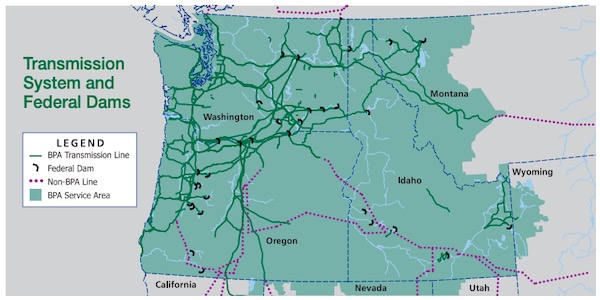forum
library
tutorial
contact

Blackouts Could Be
In Our Future
by Lori Sanders
Tri-City Herald, February 16, 2020
|
the film forum library tutorial contact |

|
Blackouts Could Be
by Lori Sanders
|
The planned shutdowns and accelerated retirement of coal plants add 4,800 megawatts to the capacity deficit.
 How do you signal that something is wrong? Automobile drivers use their hazard lights. On the water you might shoot a flare into the air. The Commissioners of Benton PUD are waving a flag. A big, red, attention seeking, warning flag.
How do you signal that something is wrong? Automobile drivers use their hazard lights. On the water you might shoot a flare into the air. The Commissioners of Benton PUD are waving a flag. A big, red, attention seeking, warning flag.
We see a problem looming in the region's future: capacity deficits, and if this problem isn't solved, the results could be blackouts.
Capacity deficits, not enough power to meet demand at a given time, most often occur in the winter months during extreme, sustained cold temperatures. For many years, these deficits were overcome with simple market purchases.
The likelihood of extreme measures, such as blackouts, was low; less than a 5% loss of load probability. Things are quickly changing! The planned shutdowns and accelerated retirement of coal plants add 4,800 megawatts to the capacity deficit. Without utility action the loss of load probability skyrockets to 26% by 2026. That doesn't even consider the push by activists to remove the Snake River dams, where some of the most reliable capacity is stored.
At Benton PUD, we've been scouring the plans of other utilities to see how they will handle their future load growth. None have plans to add natural gas plants to generate electricity. All have some combination of wind, solar or batteries, which does very little to solve the capacity problem. Our own local wind turbines are completely still, for up to a week, during cold cloudy winter months. You can't build enough batteries to store a weeks' worth of wind and solar.
CETA (Clean Energy Transformational Act), which passed the Legislature, calls for natural gas to be eliminated in 2045. That gives us 25 years to transition to a carbon-free grid and end our dependence on natural gas.
The need for electricity, produced by gas, during that 25-year transition period is clear. Unfortunately, the signal sent to developers is that, in Washington State, natural gas is the enemy and vulnerable to government intervention in planning and permitting.
On the national stage, our Governor used Washington State as the example of how he could eliminate carbon from the electric sector. It's hard to imagine many banks will be eager to finance a gas project with a target like that on its back.
As PUD Commissioners we, have a responsibility to the people of Benton County. We don't think a 26% chance of extreme measures, such as blackouts, is acceptable and neither should you! We will do what we can to mitigate this issue. We are exploring every option available to us including fighting to keep the capacity that we currently have from the lower Snake River dams.
The Governor of California was critical of their local electric utility, PG&E. The utility didn't send a warning flag to the state that their system lacked maintenance and was vulnerable to wildfires, leading to extended self-imposed blackouts.
That's not a complaint that we want Governor Inslee and our Legislators to make. We are here waving our red flag. Now, if we could just get their attention.
Related Pages:
New Analysis says Dam Removal Means $860M Energy Replacement Costs by Mallory Gruben, The Daily News, 2/14/20
learn more on topics covered in the film
see the video
read the script
learn the songs
discussion forum
